Challenges in the Marketing Ecosystem...

By Adam Kleinberg
Last week, I spoke to a group of students at U.C. Berkeley's Haas School of Business about challenges brands face throughout the marketing ecosystem.
... and how my agency, Traction, is helping clients address them. I was invited to speak by Professor Bill Pearce who has been a C-level marketer at little places like Taco Bell, Del Monte and P&G. Students take Bill's class because they want to learn from the best, so it was sincerely an honor to be invited to share my point of view.
Bill asked me to speak about challenges marketers face and how my agency is helping them with marketing-driven growth. I decided to address the entire marketing ecosystem.

Marketers face so many challenges today, it's hard to know where to begin. Not only are brands facing challenges in their own organizations and with changing consumer behavior, but there is chaos in the ranks of the publishers, platforms and agencies that provide the connective tissue between the two.
So, let's take a look at them all.
Marketers in the hot seat
As I recently wrote in Ad Age, CMOs are dropping like flies . Turnover is at an all time high. In some sectors, it's astounding. In a six-month period last year, a jaw-dropping 48% of the top 30 retailers had a change of marketing leadership. The most recent report released last week by Russell Reynolds Associates showed that 74% of new CMO hires come from outside the company.
That's just another way of saying, CEOs don't believe the people who work for them now can do the job.
When Russell Reynolds interviewed a group of CEOs and CMOs, they identified eight distinct factors from misaligned expectations to changing consumer behavior to new skill sets, but really they all pointed back to one thing: the Rise of Digital.
There are certainly many sophisticated digital marketers out there, like Traction's client, Mike Ballard from Lenovo who recently described what he sees as the biggest marketing challenge of 2017 :
I think one of the biggest challenges for marketers in 2017 will be to make sure their messages are personally relevant. This means innovating to actually communicate with consumers on a one-to-one basis, instead of one-to-many. It means knowing who your customer base is, which part of your audience you're trying to reach, and crafting the messaging that will speak to them most directly and powerfully.
But from the C-Suite, the problem is significantly more meta. Since the financial collapse in 2009, CMOs are under increasingly greater pressure to deliver a quantifiable ROI on every dollar of marketing expenditure. And very often, that ROI is equated to short-term attributable sales.
This is screwed up for two simple reasons:
- Professor Bill once told me that when he was a CMO, when his staff asked him for budget for something, he would ask them, "What attitude, perception or behavior are you trying to change?" No answer? No budget. Today, there is plenty of focus on specific behavior changes (i.e. did your customer buy something today?), but almost none on the attitudes and perceptions that reside in your customer's mind.
- The science of attribution is directional at best. In the course of a month, you might see a billboard, a TV spot, a banner ad, a comment your buddy from high school makes on Facebook all for the same brand... and maybe you buy something from that brand in three months. Do you really think you can accurately assign a percentage impact value to that sale for each of those touchpoints? Come on.
Therein lies the False Promise of Digital. When digital came to the fore, there was an insinuated oath: the infamous John Wanamaker quote, " Half the money I spend on advertising is wasted; the trouble is I don't know which half ," will be put to rest! From now on, you will be able to know exactly how much money you get back for every dollar you spend on advertising!
But you won't spend money on half the things you should.
Case in point: up to 90% of sales in some categories are influenced by the web, while 80% of those sales are made some time later at a brick and mortar store.
If you only invest in the things you can prove, you're missing out on many of the things you need to be doing. If you only invest in short-term sales, it's like pouring water into sand.
And I've got news for you—the long-term is only a year away.
But that's only one part of the Marketer's Dilemma. Let's turn our attention to...
Consumers evolving like Usain Bolt
It's no surprise that the relationship people have with brands, media and technology is changing really, really fast. They are constantly connected, have more options, less patience, and less tolerance for advertising. In fact, the entire way people interact with brands has fundamentally changed.
Take a look at this diagram from Forrester Research on the "marketing funnel." In Figure 1-1 (the good old days) it was a simple and foolproof tool marketers could use to plan their investments. In Figure 1-2 (now), it is a chaotic mess.

As an agency, we advise clients to make sure they take pains to understand the customer journey. We do workshops. Observe customers. Use empathy. And whiteboard pens.
It's by no means a linear path, but by plotting out the legs of that journey we can understand what it is that we need to accomplish and measure what really matters .
Publishers gasping for breath
Meanwhile, the media is in a state of turmoil. "Publishers" is the blanket term ad folks use to describe all the places we pay money to in order to reach their audiences (our customers). As I wrote last week , even the Super Bowl, the holy grail of advertising reach, has reached its peak in the face of this ever-growing demand for quantifiable ROI.

Online, it gets even worse. Sure, online ad spend keeps growing. Great news if your name is Mark Zuckerberg or Sergei Brin. If you're anyone else, however, your slice of pie is getting smaller. No whipped cream for you. You're likely to be desperate to keep your business afloat and will do whatever it takes to make a buck.
Which brings us to ad tech...
Ad tech has been a f-cking disaster
First of all, it's a chaotic mess. This diagram is called the LUMAscape. It became a meme in digital advertising circles when it came out a few years ago because it represents what a chaotic mess digital advertising is.
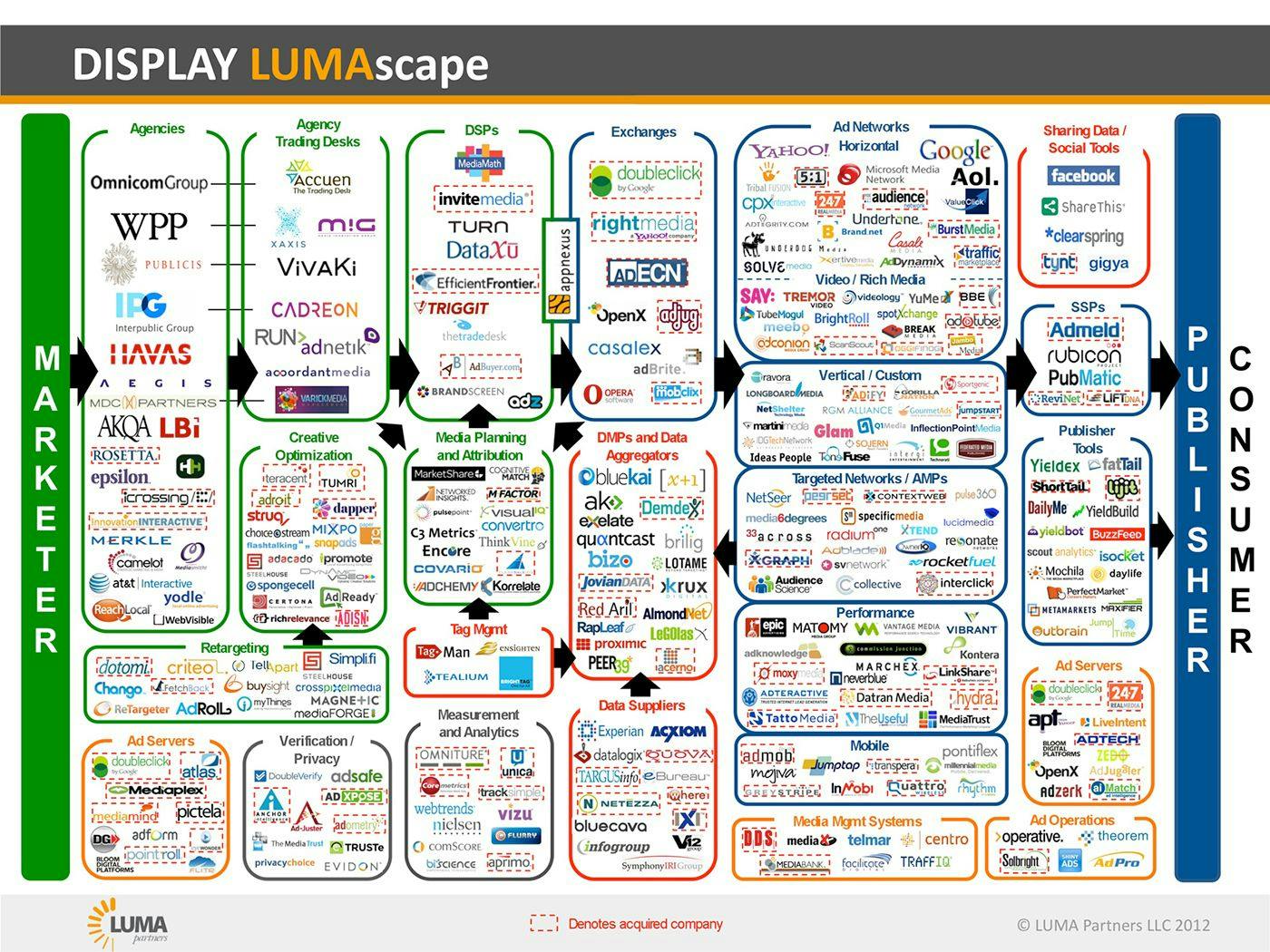
How marketers are supposed to make sense of this mess and know which partners they should work with is beyond me? They hire agencies like mine, in part, to help them make sense of it all.
And they need to. The promise of ad tech is to eliminate waste and allow us to better target our customers. Those are great things, but because of the Wild West environment that ad tech has grown up in, their implementation has been disastrous . Even Google has come out saying that up to 56% of online ads are never seen by humans due to issues of fraud and viewability.
This has prompted marketers to lose their shit. Just last week, Marc Pritchard, CMO of Proctor & Gamble, told the industry that he would no longer pay for ads that aren't seen by humans. That prompted one outdoor advertising group to install this billboard outside of his office in Cincinatti.

Realness. What a competitive advantage.
Agency holding companies are like wobbling drunkards
Those aren't my words (I wish they were). Those are the words of Dan Weiden at the Ad Age Small Agency Summit about 2 years ago.
Big agencies are desperate. The model that they've made their money on are under scrutiny and pressure for the first time. They've responded by being sneaky in an effort to hold onto—or even increase margins.
The cloak of big agency transparency was lifted last year when they Association of National Advertisers came out with a scathing and now infamous report . It showed that big agencies and their holding companies were guilty of hidden mark-ups (sometimes 50% or more!), kickbacks, and rampant incidents of agencies placing media that the holding company owned over what was right for the client.
Meanwhile, Sir Martin Sorrell, the CEO of WPP, the biggest holding company of them all, had a salary of over $100 million last year.
But now that this behavior has been exposed, the holding companies are in even bigger trouble and the gravy train may run off the tracks. Publicis (another holding company) just reduced their projected amount of revenue from digital for 2017 by $1.5 BILLION because of less than expected performance from digital. Ouch.
This is one of the reasons that brands are creating their own agencies in-house. You can see from the chart below that the number of brands with in-house teams rose from 42% to 58% between 2008 and 2013. Today, that number is likely closer to 80%.
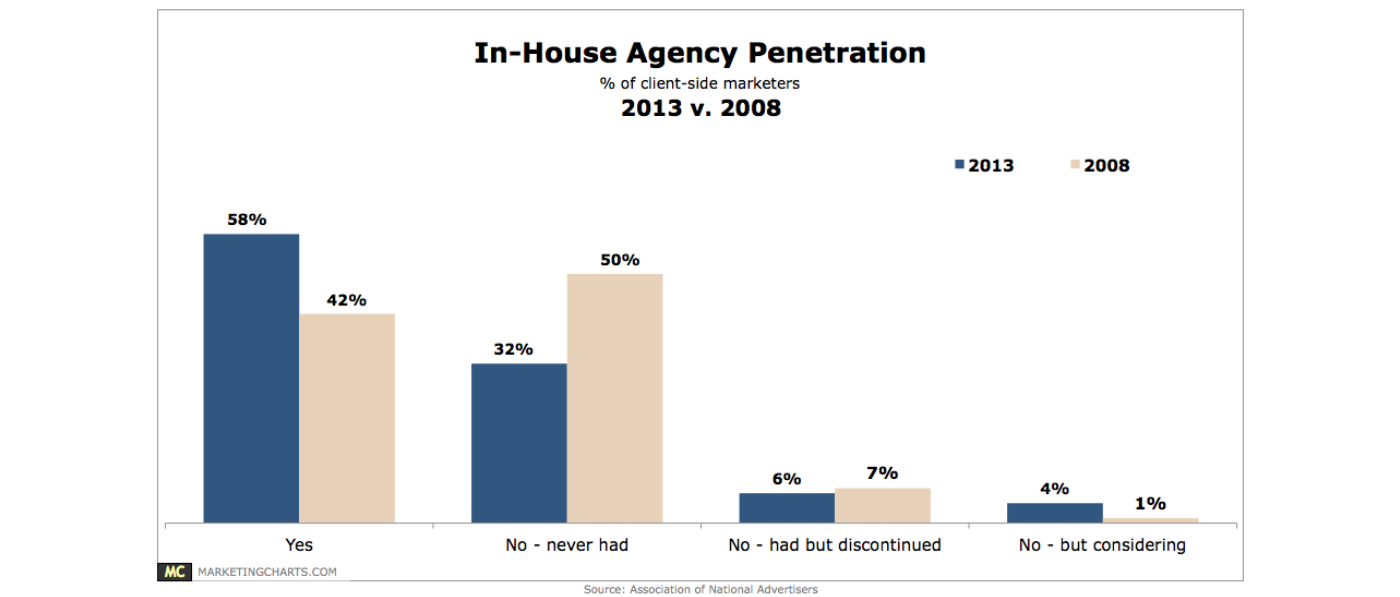
Another reason for that shift is simply the proliferation of digital assets that now need to be created. For a small time, agencies had a money grab where they cashed in by doing commoditized work. But like any business, if an agency is not creating value with the services they offer, they're ultimately going to lose that business.
Another challenge many agencies are facing is the shift to project-based work. Because clients have in-house teams, they are moving away from retainer-based agency support to more project-based relationships. If you look at the two sets of bars to the right in the chart below, you'll see a 25% increase in the percentage of brands billing more than 60% of their work on a project-basis.
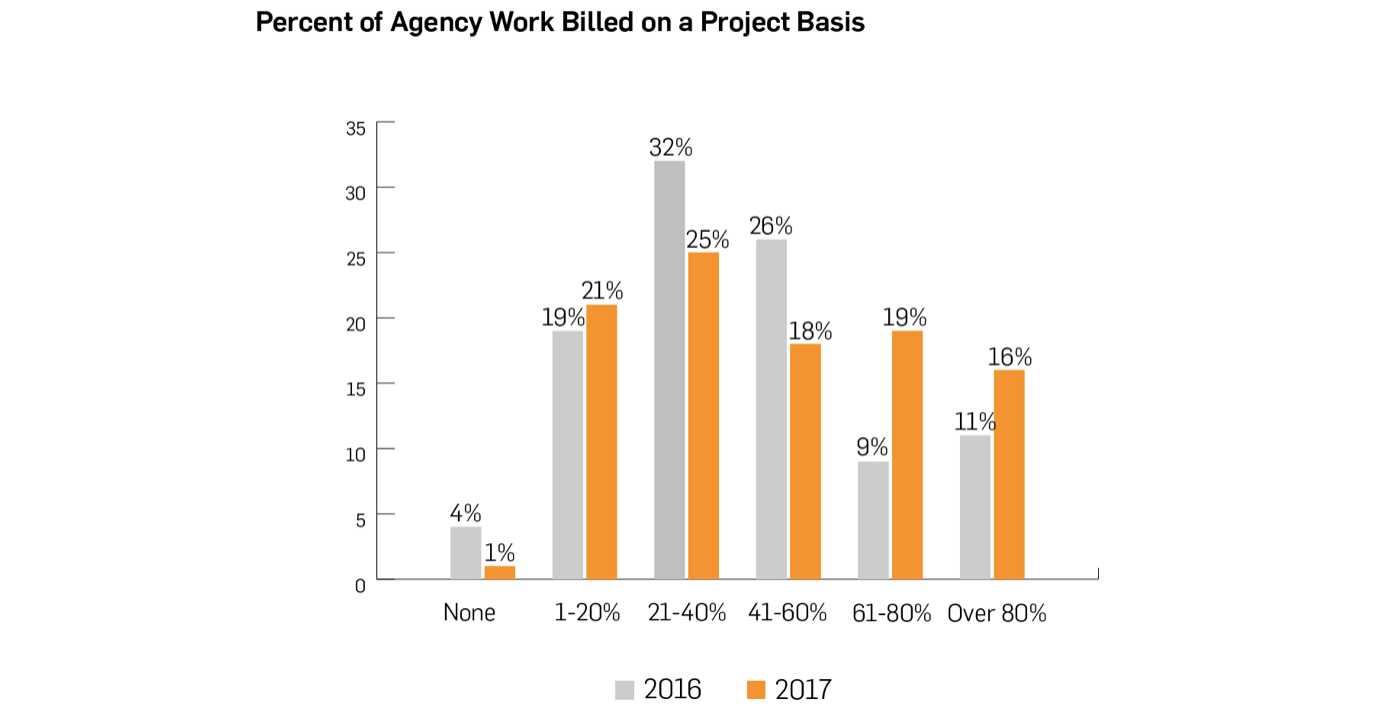
For agencies that are accustomed to large retainer relationships, the inherent inconsistency of project-based work makes it harder to maintain staff and margins.
New challenges present new opportunities
The dynamics of the marketing landscape have changed, but the challenges I've discussed above represent new opportunities to create real value. As the CEO of a leading independent agency, I'm actually very excited about the clarity that is starting to emerge about how agencies can really help CMOs solve challenges they simply cannot address on their own.
Bill asked me to share with his students what my agency is doing to help fuel marketing driven growth amidst these challenges. Here are some of the key areas of focus that address the parts of the ecosystems I've outlined above:
- Focus on client needs. This may sound simple, but I think it is something that is often overlooked by agencies. At Traction, we have created laddered goals for every employee and team that lead up to three pillars that we believe will ultimately define our success. These pillars are Thriving People, Great Work, and Client Success. A core goal for every employee in the agency is to operate with a clear understanding of what KPIs (Key Performance Indicators) and KBOs (Key Business Objectives) matter to the client. Sometimes we're able to influence them, sometimes we aren't, but fundamentally we believe that if our team's bonuses are influenced by making sure our clients maximize theirs, we'll wind up with happy clients.
- Focus on customer needs. Advertising is getting harder, but brand love still matters. This is why more and more brands are looking at their customer experience as a driver of brand affection. In fact, in a recent Gartner study, 89% of brands said they anticipate differentiating primarily on the basis of customer experience. That's up from 38% four years earlier—a sea change. The problem is that despite the anticipation, a great many of those brands have no plan in place to actualize that CX improvement. We have expertise in bringing together psychology and technology to design such experiences, and we are bringing that to bear to help brands succeed. This is a big area of focus for our agency.
- Focus on media integration. Traction grew up as a creative agency, but we have made investments over the past three years to establish a tightly integrated media practice . We believe that brands needs get beyond simply counting impressions and back to making them. The activation of a creative idea is critical to its success. This means the right partnerships with the right publishers and platforms to maximize the impact of our work.
- Focus on insight. The marketing world has been going gaga over data for the past several years, but here's a little secret: data-driven creative has a tendency to suck . Insight-driven creative happens to be incredibly power—so we've invested in marketing intelligence tools like Resonate that surface real insight into people's values, not just their online behaviors or demographics.
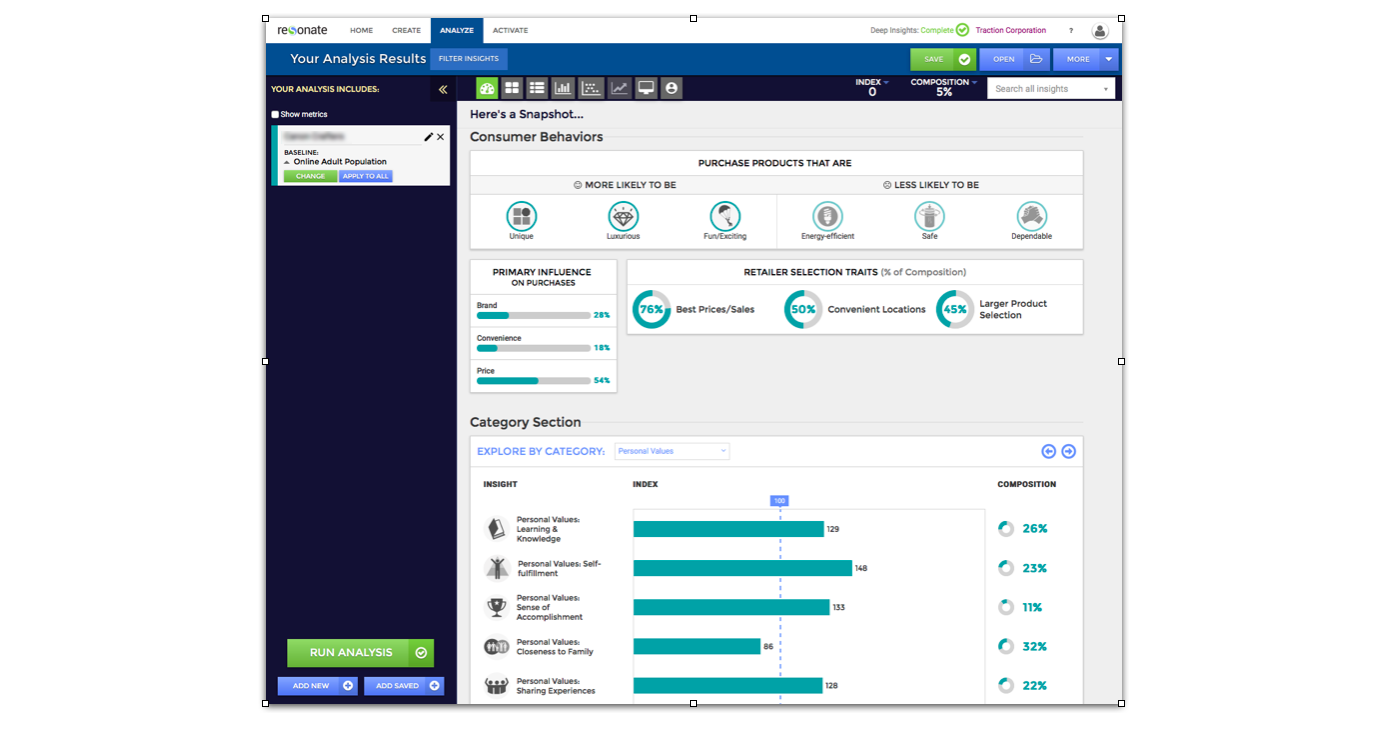
At its core, this focus on value to customers is where we focus because it's where we bring value to our clients. The fight for people's attention is too fierce. Brands have to go to market with experiences and content that people actually want to consume, or they will simply be ignored.
It all starts and ends with the customer. That's where brands will ultimately find the solutions to their challenges—and so will all the players in between.

Adam's take on the downfall of PewDiePie.
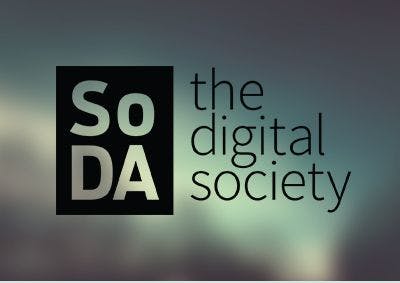
Traction was elected as SoDA’s newest member in the latest round of voting by their global membership. We are excited to be joining this select, invite-only group of digital innovators from around the world.
The potential for artificial intelligence (AI) to soon become a powerful tool in the CMO toolkit is very real.
